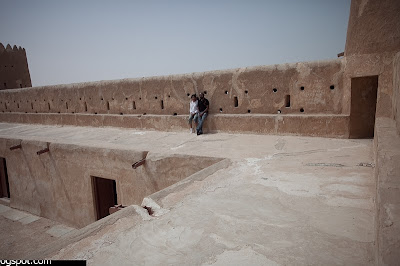French feminists have launched a campaign to abolish the use of "mademoiselle", a term for an unmarried woman still used on official papers which they say demeans and enshrines sexism.
France has no equivalent to the ambiguous "Ms" used in English, and French feminists do not see the need for it. They just don't see why it is deemed necessary immediately to know a woman's marital status and not a man's.
"When opening a bank account, it's impossible to be called 'Madame' if you're unmarried. You will certainly end up as 'Mademoiselle'," Christine wrote on www.viedemeuf.fr, a forum for the "sexist cliches of daily life."
"It might seem like a detail but it's highly symbolic of inequalities," said Julie Muret, of "Osez le feminisme!" (Dare feminism!), which this week, along with the "Chiennes de Garde" group (Guard dogs), launched a campaign for 'mademoiselle' to be officially abolished.
The use of "mademoiselle" was inscribed in French law in the early 19th century thanks to the Napoleonic Code, but today it no longer has any legal meaning.
While in France letters from the taxwoman will be addressed to "mademoiselle", in Germany the equivalent term "fraulein" faded out in the 1990s, after having been eliminated from official use in 1972.
Laurence Waki, who wrote a book called "Madame or Mademoiselle", says that people who make the distinction are imposing an identity, "either of age, or of marital status. It's unbearable."
"That forces a woman to expose her personal and family situation," while men do not have to, said Muret, noting the often condescending connotation of "mademoiselle."
But for Olivia Cattan, of the "Paroles de Femmes" (Women's words) group, the issue should not be a priority.
"This isn't going to resolve women's problems, the violence, the precariousness," she said.
The campaign is being launched at a time when French feminists are resurgent since former fallen French Socialist leader Dominique Strauss-Kahn was arrested in New York in May for allegedly trying to rape a maid.
The criminal case was thrown out after prosecutors deemed the alleged victim to be unreliable, but several feminist groups are currently defending French writer Tristane Banon, who also accuses Strauss-Kahn of attempted rape.
Strauss-Kahn denies both charges.
"Launching this campaign doesn't stop us talking about discrimination and violence," said Muret.
But opinions differ on the Facebook page of "Osez le feminisme", where a woman called Mireille wrote of the campaign: "This discredits the feminist struggle, it's drowning out important matters."
She would rather see energy spent on changing "the image of women in adverts, music videos, getting equal salaries paid to people with the same qualifications."
Alexandra, 26, wrote that she was "revolted" by the campaign.
"I think that it's very beautiful to be called mademoiselle... It's not degrading, on the contrary, it's a sign of youth," she wrote.
(Source: AFP)
France has no equivalent to the ambiguous "Ms" used in English, and French feminists do not see the need for it. They just don't see why it is deemed necessary immediately to know a woman's marital status and not a man's.
"When opening a bank account, it's impossible to be called 'Madame' if you're unmarried. You will certainly end up as 'Mademoiselle'," Christine wrote on www.viedemeuf.fr, a forum for the "sexist cliches of daily life."
"It might seem like a detail but it's highly symbolic of inequalities," said Julie Muret, of "Osez le feminisme!" (Dare feminism!), which this week, along with the "Chiennes de Garde" group (Guard dogs), launched a campaign for 'mademoiselle' to be officially abolished.
The use of "mademoiselle" was inscribed in French law in the early 19th century thanks to the Napoleonic Code, but today it no longer has any legal meaning.
While in France letters from the taxwoman will be addressed to "mademoiselle", in Germany the equivalent term "fraulein" faded out in the 1990s, after having been eliminated from official use in 1972.
Laurence Waki, who wrote a book called "Madame or Mademoiselle", says that people who make the distinction are imposing an identity, "either of age, or of marital status. It's unbearable."
"That forces a woman to expose her personal and family situation," while men do not have to, said Muret, noting the often condescending connotation of "mademoiselle."
But for Olivia Cattan, of the "Paroles de Femmes" (Women's words) group, the issue should not be a priority.
"This isn't going to resolve women's problems, the violence, the precariousness," she said.
The campaign is being launched at a time when French feminists are resurgent since former fallen French Socialist leader Dominique Strauss-Kahn was arrested in New York in May for allegedly trying to rape a maid.
The criminal case was thrown out after prosecutors deemed the alleged victim to be unreliable, but several feminist groups are currently defending French writer Tristane Banon, who also accuses Strauss-Kahn of attempted rape.
Strauss-Kahn denies both charges.
"Launching this campaign doesn't stop us talking about discrimination and violence," said Muret.
But opinions differ on the Facebook page of "Osez le feminisme", where a woman called Mireille wrote of the campaign: "This discredits the feminist struggle, it's drowning out important matters."
She would rather see energy spent on changing "the image of women in adverts, music videos, getting equal salaries paid to people with the same qualifications."
Alexandra, 26, wrote that she was "revolted" by the campaign.
"I think that it's very beautiful to be called mademoiselle... It's not degrading, on the contrary, it's a sign of youth," she wrote.
(Source: AFP)






































